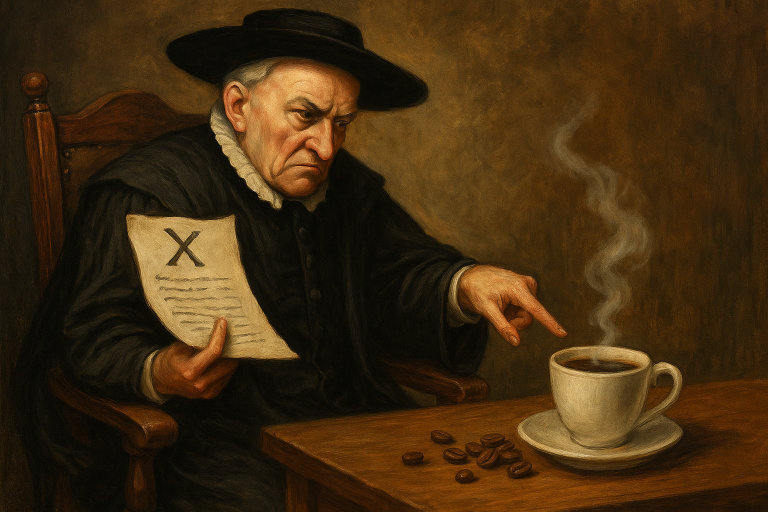
When coffee first arrived in the Americas, it didn’t just bring a new beverage—it brought transformation. From Caribbean plantations to the bustling cafés of New York and Buenos Aires, coffee reshaped economies, cultures, and societies across the Western Hemisphere.
In this article, we’ll trace coffee’s journey across the Atlantic, explore how it fueled colonial economies, created cultural identities, and ultimately turned the Americas into a powerhouse of global coffee production.
Coffee made its debut in the Americas in the early 18th century, as European colonial powers sought to expand production beyond Africa and Asia. The story begins with France, which had introduced coffee to its colony of Martinique in 1720. Legend says that a French naval officer named Gabriel de Clieu smuggled a coffee plant across the Atlantic aboard a ship—protecting it through storms and even rationing his own water to keep it alive.
That one plant reportedly gave rise to millions of coffee trees across the Caribbean, Central, and South America.
Soon after, the Dutch, Portuguese, and Spanish followed suit, establishing plantations in their respective colonies. Coffee had officially landed in the New World.
One of the earliest and most important centers of coffee production was Saint-Domingue (modern-day Haiti), a French colony in the Caribbean. By the late 1700s, it was producing more than half of the world’s coffee supply.
But this success came at a high human cost. Coffee was grown on large plantations worked by enslaved Africans, under brutal conditions. The profits fueled the French economy, while enslaved workers endured unimaginable suffering.
This exploitation led to deep unrest, culminating in the Haitian Revolution (1791–1804)—the world’s first successful slave revolt, which ended colonial rule and drastically reduced coffee production on the island.
The most transformative moment in coffee’s American journey came with its spread to Brazil. In 1727, coffee was smuggled into the Portuguese colony from French Guiana. It flourished in Brazil’s fertile soil and favorable climate.
By the mid-1800s, Brazil had overtaken all other producers to become the largest coffee exporter in the world—a position it still holds today.
Massive plantations, known as fazendas, were established across the southeast. They relied heavily on enslaved labor until the abolition of slavery in 1888, after which waves of European immigrants continued the work under exploitative systems.
Brazil’s coffee boom fueled urban growth, railroads, and trade, particularly in São Paulo and Rio de Janeiro, forever shaping the country’s economy and social fabric.
Coffee also became the economic backbone of several Central American nations, including Guatemala, El Salvador, Honduras, and Costa Rica.
Introduced by European missionaries and traders, coffee adapted well to the mountainous regions of Central America. By the 19th century, local governments and elites began encouraging coffee cultivation as a path to modernization.
However, this came with a cost: many indigenous communities lost land to wealthy plantation owners, creating systems of economic inequality that still persist today. The term “coffee republics” was coined to describe countries that became politically and economically dependent on coffee exports.
In the United States, coffee played a symbolic role during the colonial struggle for independence. Following the Boston Tea Party (1773), tea became associated with British oppression, and many Americans switched to coffee as a patriotic alternative.
Coffeehouses in cities like Boston, Philadelphia, and New York became hubs for political discussion, business deals, and revolutionary ideas. While the U.S. never became a major coffee producer, it quickly became one of the world’s biggest consumers.
In Latin America, coffee became more than an export crop—it became part of the national identity. In Colombia, for example, coffee was introduced in the 18th century by Jesuit priests and became central to the country’s economy and culture.
The image of the Colombian coffee farmer, or cafetero, became a national symbol. Marketing campaigns like “Juan Valdez” in the 20th century cemented Colombia’s image as the land of quality coffee and hardworking growers.
Similarly, in Costa Rica, coffee was known as “el grano de oro” (the golden bean), symbolizing prosperity and development.
As coffee production spread across the Americas, it dramatically influenced trade routes, port cities, and transportation systems.
Coffee was so influential that it shaped foreign policy—U.S. companies and governments became increasingly involved in Latin American affairs, often to protect coffee-related investments.
Despite its economic benefits, coffee production often deepened social divides. Large landowners and foreign companies profited immensely, while small farmers and laborers struggled with poverty.
In many regions, coffee created land monopolies, where elites controlled both production and politics. In the 20th century, this led to civil unrest and resistance movements, such as the agrarian reforms in El Salvador and Guatemala.
The human cost of coffee remained an undercurrent in the region’s history.
In recent decades, the Americas have seen a resurgence of interest in small-scale and specialty coffee. Farmers in countries like Colombia, Brazil, and Honduras are now focusing on high-quality beans, sustainable farming, and fair trade practices.
Meanwhile, café culture has boomed in urban areas—from Bogotá to Buenos Aires, and from Mexico City to Miami—bringing a renewed appreciation for coffee as a cultural and artisanal experience.
Baristas, roasters, and coffee enthusiasts are reclaiming the bean’s legacy, focusing on transparency and connection between grower and consumer.
The journey of coffee to the Americas is a story of contrasts: opportunity and oppression, wealth and inequality, resilience and revolution. It shaped the development of entire nations, fueled global trade, and became a symbol of both identity and resistance.
Today, every cup of coffee we drink connects us to that journey. Behind the flavor is a story of migration, ambition, struggle, and pride.
To honor that story, we must continue to support ethical coffee practices and remember the people—past and present—who made it possible.

Gabriel Rodrigues é especialista em finanças pessoais e escritor, com ampla experiência em economia, planejamento financeiro e gestão de recursos. Apaixonado por ajudar as pessoas a alcançarem sua saúde financeira, ele explora temas variados, desde investimentos até estratégias de poupança. Quando não está escrevendo, você pode encontrá-lo estudando novas tendências financeiras e oferecendo consultoria para quem busca melhorar sua relação com o dinheiro.